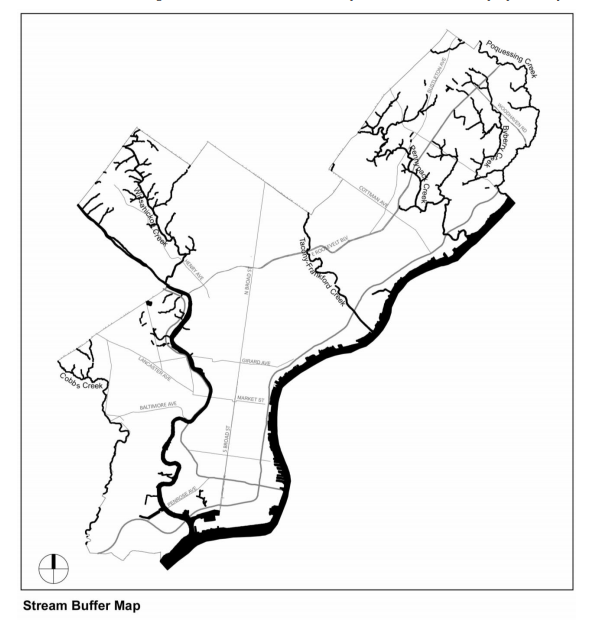Council adopts changes to zoning code, including restricting waterfront setbacks and extending the interim Central Delaware overlay

City Council Thursday passed amendments to the new Philadelphia Zoning Code, shortening the timeline for Civic Design Review, applying a 50-foot stream buffer only to waterways that are drinking-water sources, removing the upper limit on parking spaces allowed in development projects, and continuing special protections for the Central Delaware Waterfront.
Proponents of the stream buffer change, including the Development Workshop, have argued that requiring the buffer everywhere would hamper some industrial uses. Deputy Mayor for Economic Development Alan Greenberger, who also chairs the city planning commission, recently told city council’s Rules Committee that the buffer made good environmental sense, and that exceptions would be granted so that industry would not be thwarted.
Most of the amendments proposed by city planners were removed at recent Rules Committee meeting. Learn more about that here. These changes weren’t added this time, but the discussion isn’t over, said Planning Commission Deputy Executive Director Eva Gladstein.
“We will definitely pursue the adoption of the ‘clean-up’ amendments since all but one of the dozens of recommended changes were removed from the bill that passed Council,” Gladstein said. “There are many, many remaining “clean-up” amendments that provide additional clarity and will make the new code easier to use and administer,” she said.
The Rules Committee held off on those other amendments in part because members considered them too complicated to be classified as “technical” changes, and wanted more information. “We are looking forward to reviewing these, as well as the sign controls proposed in Bill #120430, with City Council over the summer. That way, Council will feel ready to take these up in the fall,” Gladstein said.
One 6-mile portion of the Delaware River, from Oregon to Allegheny avenues, does have a stream buffer of 100 feet, thanks to the amendment adding the existing interim Central Delaware Overlay, which would have expired when the new code goes into effect on Aug. 22, to the new code.
Planners and the Delaware River Waterfront Corporation – the quasi-city agency that oversaw development of the master plan that the overlay is designed to protect – had hoped to have a new overlay in place by now, as the new version was written to be more in tune with the plan. Gladstein said planners are “pleased the existing overlay was extended as an interim measure.”
Both the Central Delaware Advocacy Group and the Development Workshop had issues with the new overlay, an ordinance for which has been introduced by First District Councilman Mark Squilla and will be taken up again by council this fall. Since the ordinance has been introduced, Gladstein said any changes would have to be made via amendment.
The Development Workshop feels the proposed overlay impinges on private property rights with requirements for a waterfront trail and street grid extension. Conversely CDAG feels the current provisions don’t go far enough to ensure public waterfront access and street grid extension.
Both the workshop and CDAG were fine with extending the interim overlay, and both are expected to continue to push for changes to the proposed permanent overlay.
Reach the reporter at kgates@planphilly.com
WHYY is your source for fact-based, in-depth journalism and information. As a nonprofit organization, we rely on financial support from readers like you. Please give today.






